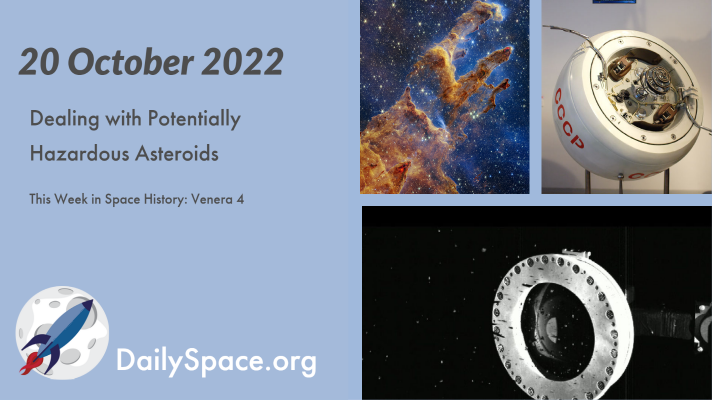
Oct 21, 2022 | Asteroids, Astrobiology, Curiosity, Daily Space, ESA, Galaxies, JAXA, JWST, Mars, OSIRIS-REx, Space History, Star Forming Region, Venus
A trio of asteroid-related stories crossed our emails this week: Bennu’s sample is on schedule for next year’s return, researchers have developed a tool to measure an asteroid’s density distribution, and 3200 Phaeton’s rotational period has accelerated. Plus, JWST’s new Pillars of Creation image, and this week in space history, we look back at Venera 4.
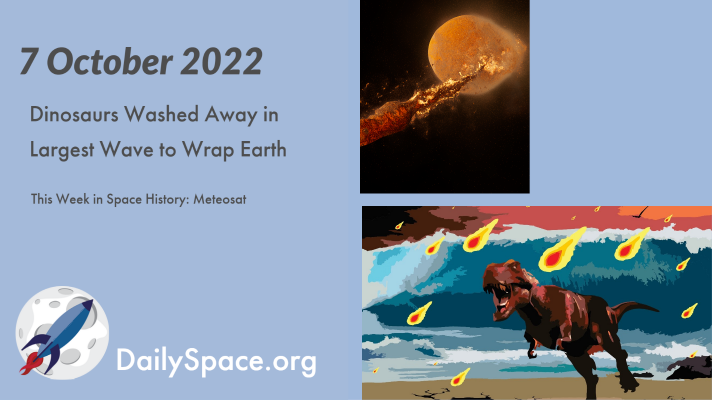
Oct 8, 2022 | Asteroids, Daily Space, Earth, Milky Way, Moon, Space History, Spacecraft
As if getting set on fire and tossed into space wasn’t enough, new research finds evidence that after the Chicxulub impact, dinosaurs were also the victims of a massive global tsunami and worldwide earthquakes. Plus, the Milky Way’s stellar graveyard, a new timeline for the Moon’s formation, and this week in space history, we look back at the Meteosat program.

Oct 1, 2022 | Asteroids, Daily Space, DART, Exoplanets, Galaxies, Globular Cluster, Guest Interview, JWST, Space History, Spacecraft
The quest to understand the formation mechanisms of globular clusters was limited by the Hubble Space Telescope’s ability to peer back in time. Now, JWST’s larger mirror has allowed astronomers to find gravitationally lensed galaxies that have globular clusters almost nine billion years old. Plus, two new super-mercury exoplanets, This Week in Space History, and an interview with Eric Palmer about the DART mission.
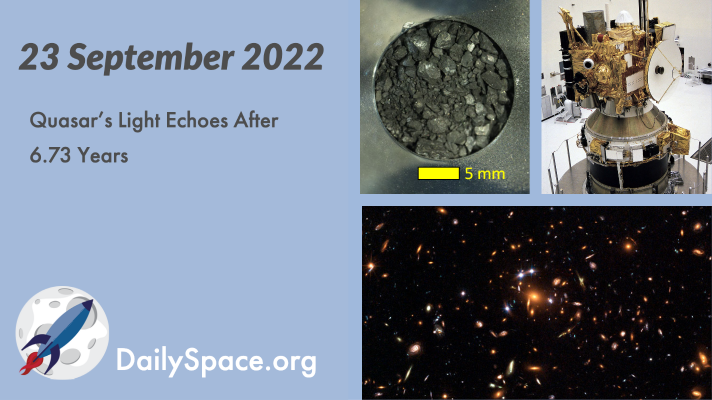
Sep 24, 2022 | Asteroids, Daily Space, DART, Europa, Fast Radio Bursts, JAXA, Jupiter, Mars, Quasar, Random Space Fact, Space History
Astronomers using the 1.2-meter Whipple Observatory to follow the brightness of a lensed galaxy for 14.5 years have calculated that the time delay between light arriving along the shortest and farthest paths is 6.73 years. Plus, DART, Hayabusa2, Juno, fast radio bursts, and This Week in Space History, we look back at NASA’s 1990s attempts to reach Mars.
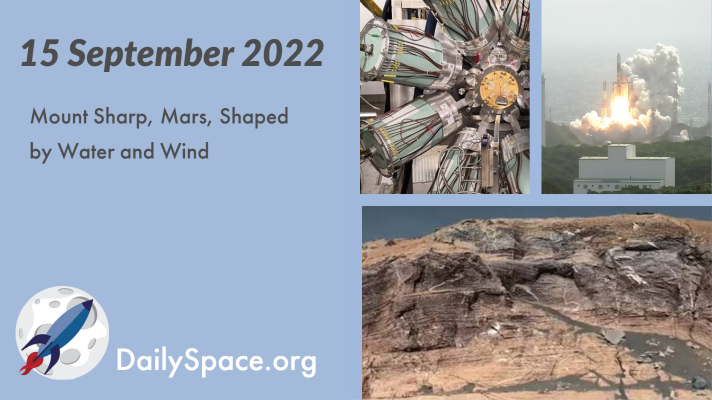
Sep 16, 2022 | Climate Change, Cosmology, Curiosity, Daily Space, Earth, Exoplanets, JAXA, Mars, Moon, Physics, Quantum, Rockets, Space China, Space History, Spacecraft, Supernovae, White Dwarfs
Data and images from NASA’s Curiosity rover found evidence that wind played a key role in erosional processes on the red planet, despite the lower atmospheric volume. Plus, astrophysics and cosmology news, a baby exoplanet, and this week in space history, we look back at an uncrewed lunar mission from Japan.
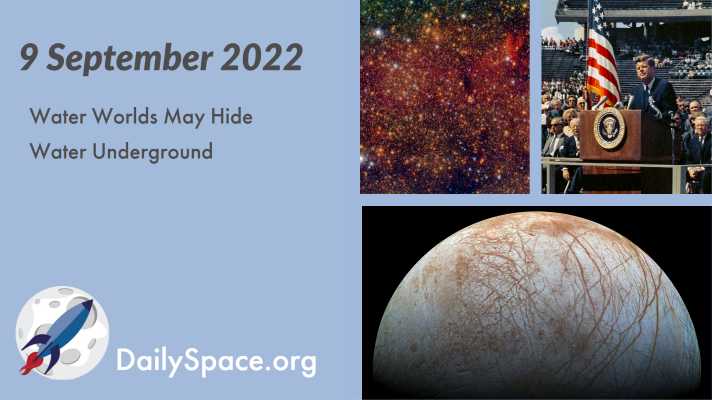
Sep 10, 2022 | Crewed Space, Daily Space, Exoplanets, Galaxies, Mars, Milky Way, Space History, Space Policy, Star Forming Region, Stars
A population study of 43 exoplanets orbiting M-dwarf stars used both the transit method and radial velocity method to find the densities of the worlds and a surprising pattern emerged. The planets are less dense than expected, suggesting they are not purely rock but half-rock and maybe half-water. Plus, star factories in the Milky Way, glaciers on ancient Mars, and This Week in Space History.








 We record most shows live, on Twitch. Follow us today to get alerts when we go live.
We record most shows live, on Twitch. Follow us today to get alerts when we go live.